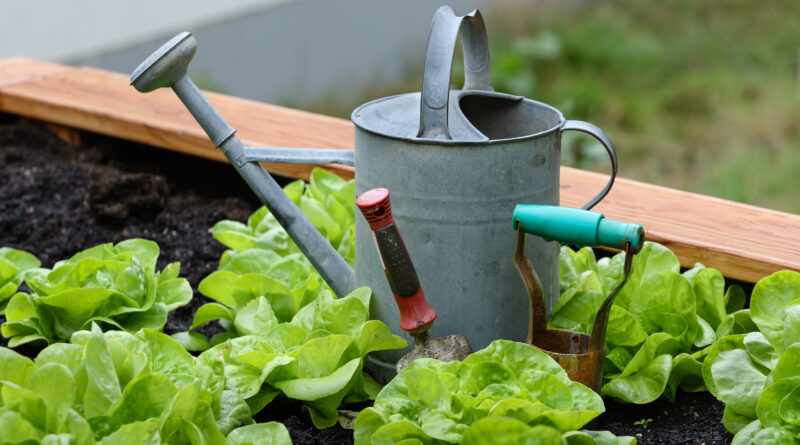
If you’re a gardener, then you know that weather can be unpredictable.
You might have the best intentions to get your garden started in early spring, but Mother Nature has other plans. Or maybe it’s summer and the heat is just too much for your plants to handle. Maybe it’s fall and all of a sudden there is an unexpected frost or snowfall overnight. Whatever the case may be, this article will help you make sure that your garden doesn’t suffer because of bad weather conditions!
In this guide, we will cover what to do when the weather doesn’t favor you as well as how to prepare yourself for those times when things don’t go according to plan! We’ll also give some tips on how to improve soil quality so that even if mother nature isn’t cooperating with our gardening efforts, at least we can still grow healthy plants! So let’s dive right into it…
Here are some ideas to get started
Plant flowers that bloom in the fall
You can create a butterfly garden with early blooming flowers that are good for the butterflies. Also, you can research drought-tolerant plants to be sure your garden will survive dry periods.
Trees and shrubs might not be ideal for planting now, but if you have evergreens in your yard, they will keep it green throughout the winter months.
Use a row cover to protect your plants from frost and wind damage
A row cover is a light cloth that can be draped over plants to protect them from frost, wind, and pests. It can also help to keep the soil warm and moist.
Protect cold-sensitive plants,
Use simple supplies like sheets or blankets to protect your cold-sensitive plants from snow, frost, or ice damage. You can also use a sprinkler on the ground near your plants to help prevent water loss due to freezing temperatures and wind.
Mulch around your plants to keep them warmer during colder months
You can use leaves, pine needles, wood chips, or other organic material. The main idea behind this is to keep the ground around your plants insulated so it does not freeze.
Create a greenhouse by covering your garden with plastic sheeting, old blankets, or large pieces of cardboard. Your plants will thank you because they are no longer being affected by the bad weather!
Bring inside any potted plants before they freeze and die
One of the best things you can do to protect your potted plants from bad weather is to bring them inside. If you have a greenhouse, this is a good place to keep them. If you don’t have a greenhouse, you can put them in an unheated room in your house, like the basement. Be mindful of the temperature in this room. If you have any other indoor plants that need to stay warm, place those around your potted plants so they can share their warmth.
Grow vegetables indoors with grow lights (indoor gardening)
One way to ensure that you can garden no matter what the weather is like outside is to grow your vegetables indoors with grow lights. This way, you can have a bountiful harvest even during the coldest winter months!
To get started, you’ll need to buy some grow lights. There are a variety of different types of grow lights available, so be sure to do your research and find the type that is best for your needs. Once you have your grow lights, you’ll need to set them up in a location where they will receive plenty of direct sunlight.
Then, it’s time to start planting! You can grow a variety of different vegetables indoors using grow lights, including tomatoes, peppers, cucumbers, and lettuce. Be sure to read the instructions that come with your grow lights, as each type of light will have different requirements for plant spacing and height.
Start seeds indoors for an early start on growing produce
If you live in a cold region that goes through frost or snow, it can be beneficial to start some of your garden plants indoors. This will likely give them a head start on the rest of your plants and might help provide more variety in the long run. You can start seeds for tomatoes, peppers, cucumbers, and many other plants indoors.
If you choose to do this, make sure that you have adequate light and warmth for the plants. You might also want to use a grow light to supplement natural light. If you live in a warm region, starting seeds indoors can help extend your growing season into the fall or even early winter.
Final Tips for extreme gardening
- If you’re trying to garden in early spring and the weather isn’t cooperating, try using a cold frame.
- If you’re trying to garden in the summer, make sure to water your plants regularly and provide them with some shade.
- If you’re trying to garden in the fall, make sure to protect your plants from frost or snowfall overnight.
- And finally, always be prepared for the unexpected! Have a backup plan in case of bad weather.
You should now have a good idea of how to prepare for Extreme gardening and what to do when the weather doesn’t favor you.
While you won’t be able to avoid all trouble, knowledge is power! You can make educated decisions on how to garden under the given conditions. And if everything still doesn’t work out? Well, at least your plants will look gorgeous in their winter coats!
Happy gardening!